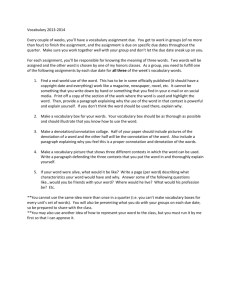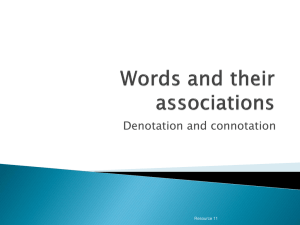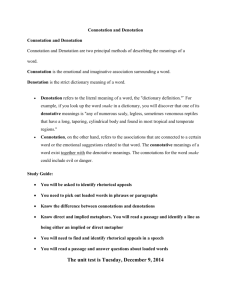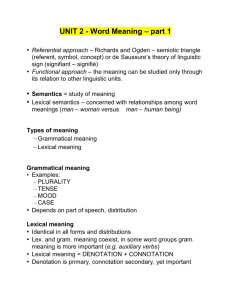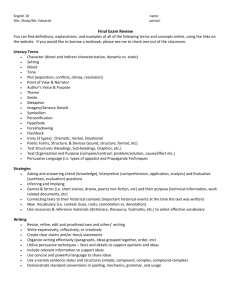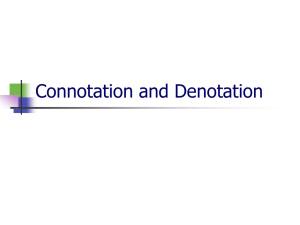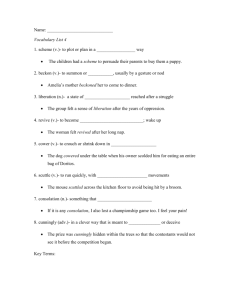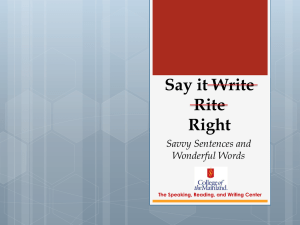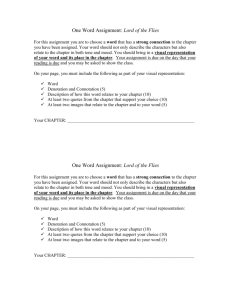Academic Language
advertisement
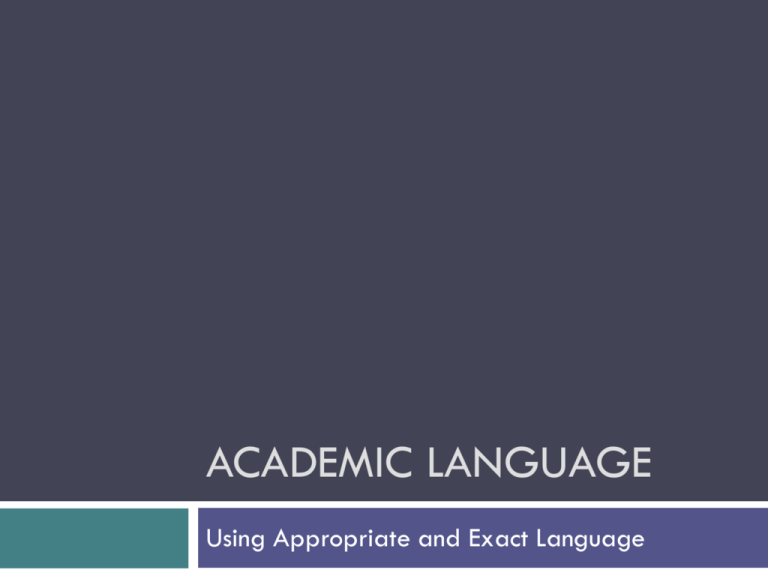
ACADEMIC LANGUAGE Using Appropriate and Exact Language Standard American English Standard American English is the dialect used in academic writing. It is called ‘standard’ because it is also used in business, the professions, and the media. Standard American is accepted as the common language just like the dollar is accepted as the common currency. Standard American English Standard American English does vary. Think about the differences between: The President’s State of the Union Address The writing in your text book The informal chit-chat between anchors on AM TV. Standard American English There are several common features of Academic writing using standard American English: It follows the conventions of standard American English for grammar and usage. Excludes forms encouraged by rapid communication in emails and texts like incomplete sentences, no capital letters, and shortened spelling. It uses standard vocabulary. Does not include slang, ethnic or regional dialects, or another language. Standard American English It creates distance between the reader and the writer with the third person (he, she, it, they). First person is sometimes used to express personal opinions, but should not be used in explanation (I discovered that grammar exercises should be taught…) Second person should only be used when addressing readers directly (as in your text book). Even then, it can sound too ‘chummy’ or condescending. (You should never split an infinitive) Standard American English It is authoritative and neutral. Allows writers to express themselves confidently, not timidly. Allows writers to refrain from hostility. Allows writers to refrain from too much enthusiasm. Standard American English Activity Turn to page 96 in the Little, Brown handbook and complete exercise 10.1. Denotation and Connotation Denotation- The dictionary definition of a word. Consult a dictionary if you are unsure of a word’s meaning. Distinguish between similar sounding words that have different meanings. * Older people often suffer infirmaries. [places for the sick] Older people often suffer infirmities. [disabilities] Denotation and Connotation Connotation- The emotional response many words carry. They can evoke specific feelings that shape a reader’s response and can be a powerful tool for writers. Denotation and Connotation The following words have related denotations, but different connotations: Pride- sense of self worth Vanity- excessive regard for oneself Firm- unchangeable, unyielding Stubborn- unreasonable, bullheaded Enthusiasm-excitement Mania-excessive interest or desire Idioms Idioms are expressions that do not fit the rules of meaning or grammar. Put See up with; plug away at page 175 in Little Brown for a list of some common idioms with prepositions. Denotation /Connotation and Idioms Activities Turn to page 173 in the Little, Brown handbook and complete exercise 18.5. Complete exercise 18.8 on page 176.
